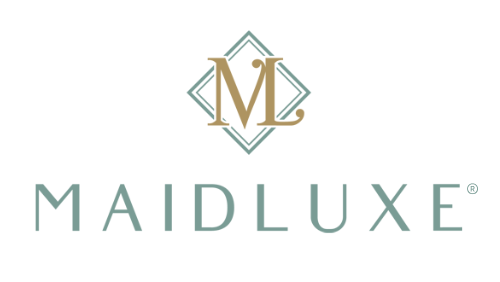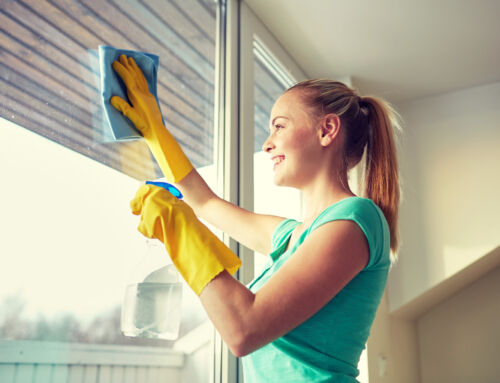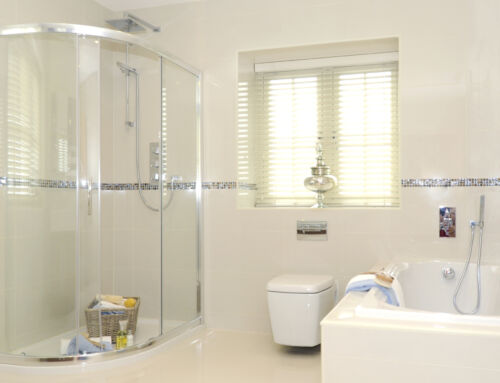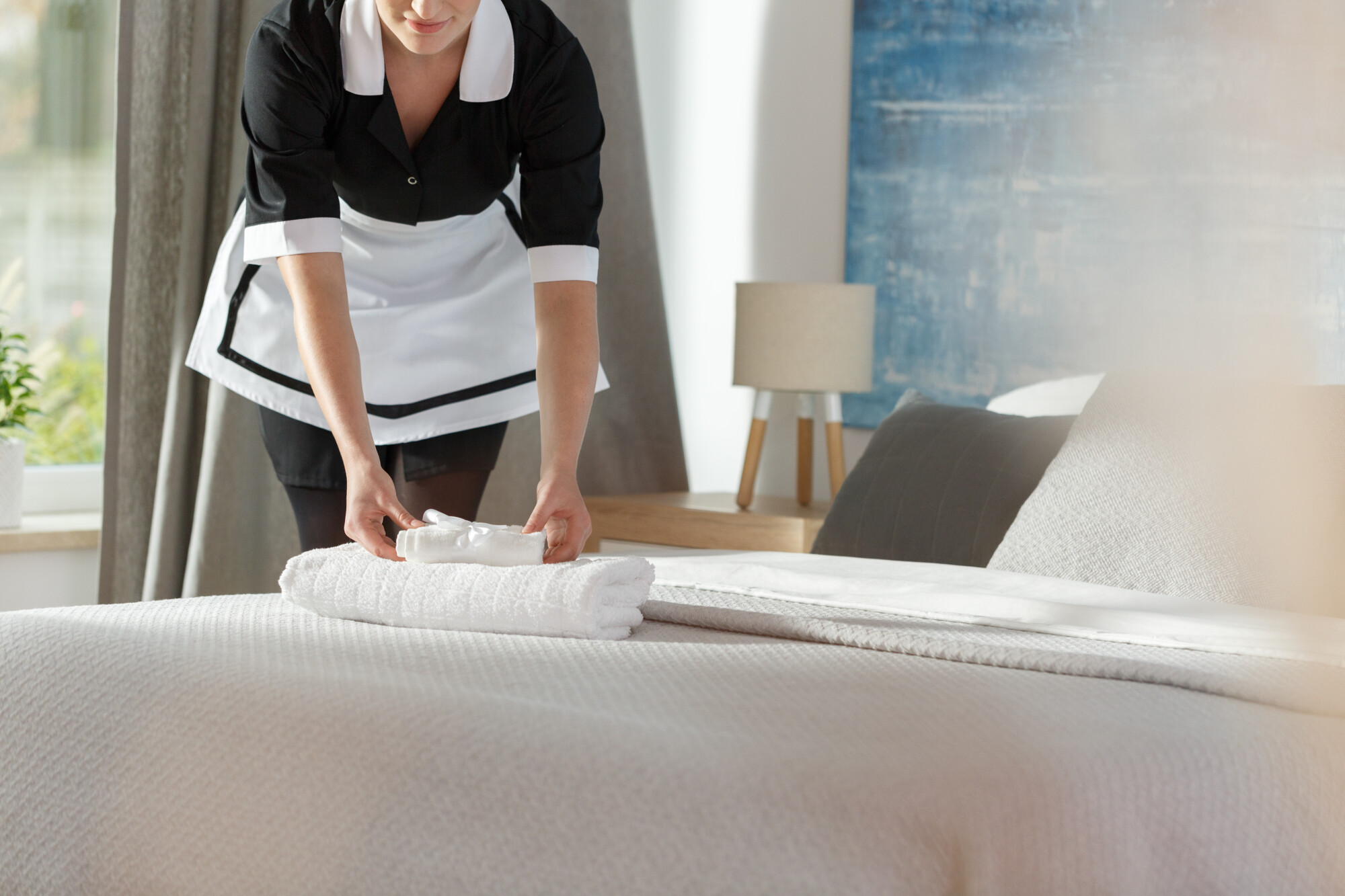
The Hygiene Haven: Cleaning Practices to Safeguard Your Family’s Health
Hygiene and Health
Certainly, when we think about health, the primary elements that likely spring to mind revolve around a balanced diet, adequate physical activity, regular health checkups, and perhaps even mindfulness practices for mental health. However, cleanliness, the unsung hero in the realm of health and wellness, often does not gain the attention it quite deserves.
Have you ever paused and pondered upon the significant role cleanliness plays in our health? If not, let’s embark on this journey of understanding together. The intricate relationship between cleanliness and health might not immediately stand out as prominently as those leafy greens on your dinner plate or that grueling morning run, but rest assured, it is just as integral to our overall well-being.
In our day-to-day life, we encounter an invisible world teeming with microscopic organisms.
While many of these microbes are harmless, and some even beneficial, there are also those that can cause diseases, sometimes even severe ones. And where do these harmful microbes love to lurk? In the grimy corners of our homes, on the unwashed dishes in the sink, on the dust-laden curtains fluttering in the wind, or even on the very devices from which you’re reading this article right now.
Cleanliness, therefore, acts as our first line of defense against these unwanted invaders. By maintaining a clean, hygienic living environment, we essentially build a fort around us and our loved ones, safeguarding us from the relentless onslaught of harmful germs. Moreover, a clean and organized space contributes to our mental well-being too, fostering a sense of calm and orderliness in our minds.
The Connection between Cleanliness and Health
Indeed, maintaining cleanliness in our living space transcends beyond aesthetics and orderliness; it is fundamentally a matter of health and wellness. The act of cleaning, simple as it may seem, is incredibly potent in preserving our physical well-being. It stands as our armor, a formidable shield that we employ against the invisible enemy – disease-causing germs.
Think about it: each time you sweep the floor, disinfect the kitchen countertop, or declutter your workspace, you are, in essence, reducing the proliferation of harmful microorganisms. These microbes are known perpetrators of various infections, from the common cold to more severe conditions. Through regular cleaning, we can dramatically minimize their presence in our homes, thereby curbing the risk of contracting such infections. It’s like having an invisible health patrol, ceaselessly ensuring your home remains a safe, health-encouraging sanctuary.
But cleanliness is not just a barrier against physical ailments.
It extends its influence into the realm of our mental well-being too. An unkempt, cluttered environment can subconsciously induce feelings of chaos, stress, and unease. In contrast, a clean and organized space emanates calm and order, fostering a serene and peaceful state of mind. The sight of a tidy room, the smell of fresh linens, or the feel of a clean floor beneath your feet can bring an instant sense of tranquility, helping you relax, focus, and even sleep better.
Therefore, a clean home becomes more than just a visually pleasing space—it transforms into a haven of health, promoting physical wellness and mental tranquility. In every wipe, scrub, and sweep, we are not merely cleaning; we are creating an environment conducive to the holistic well-being of ourselves and our loved ones. A clean home truly is a healthy home, a testament to the profound connection between cleanliness and health. Let’s cherish this fact, for it underpins our journey towards a healthier and happier life.
Key Cleaning Practices
To maintain a healthy and clean environment at home, it’s essential to follow some key cleaning practices.
Daily Cleaning Habits
As we journey through our daily life, there are essential practices that ought to be incorporated into our routines. These may seem like mundane chores, yet they are vital in safeguarding the health of our homes. Tasks such as washing dishes, wiping down kitchen counters, and promptly cleaning up spills might seem trivial, but they are the cornerstone of maintaining a hygiene haven.
Picture this: a kitchen, bustling with activity, the heart of the home.
Meals are prepared here, a nourishing confluence of ingredients coming together. However, it’s not just the delightful dishes that are being produced. Unseen to the naked eye, germs are seizing every opportunity to multiply, especially on unwashed dishes and unclean countertops. Each unattended spill or dirty dish is a paradise for them, a place to thrive and proliferate.
Now, consider incorporating these simple daily habits: washing dishes after every meal, making sure the kitchen counters are wiped down, and any accidental spills dealt with immediately. By doing so, we break the cycle of germ proliferation. Each washed dish, every wiped counter, and promptly cleaned spill are little victories in our ongoing battle against these unseen invaders. This constant vigilance and quick response help us keep the germ population in check, preventing their accumulation and the potential health risks they pose.
Such cleanliness practices require minimal time and effort but yield profound results in maintaining a hygienic and safe living space. As we go about our day, every act of cleaning becomes a health-protective measure, contributing towards a healthier home environment. Thus, let us embrace these seemingly simple chores as part of our daily rituals, for they are our steadfast allies in our quest for a cleaner, healthier home.
Weekly Cleaning Routine
Now, let’s expand our horizons and venture beyond the realm of daily cleanliness tasks. We find ourselves immersed in the sphere of weekly chores, which play an equally crucial role in maintaining a hygienic home. Activities such as vacuuming, mopping floors, and cleaning the bathroom may not be as frequent as washing dishes or wiping counters, but they are nonetheless vital in our quest for a healthier home environment.
Visualize for a moment, the unseen layers of dust and dirt that gradually settle on your floors and carpets over the week. Or consider the invisible germs that may find refuge in the corners of your bathroom. Without regular intervention, these uninvited guests may multiply exponentially, posing a threat to your health and wellness.
To prevent such scenarios, introducing these weekly cleaning activities into your routine can make a substantial difference.
As you guide the vacuum cleaner across the carpet or run the mop across the floor, you are essentially capturing and eliminating the dust, dirt, and allergens that could otherwise trigger health issues such as allergies or respiratory problems. And by dedicating time each week to scrub the bathroom tiles, disinfect the toilet, and clean the sink, you are effectively eliminating germs and reducing the likelihood of infections.
These weekly rituals, though seemingly humble in their scope, have a profound impact on the cleanliness and overall healthiness of our homes. They ensure that germs and dirt don’t get a stronghold in our living spaces, curbing their multiplication and mitigating potential health risks. Each stroke of the mop, every sweep of the vacuum, and all those scrubbing moments in the bathroom, is an affirmation of our commitment to fostering a safe, healthy environment for ourselves and our loved ones.
Therefore, let us uphold these weekly cleaning practices as our shield against the invisible threats that lurk in our homes. They serve as a testament to the connection between cleanliness and health, a bond that we must nurture for the sake of our well-being.
Monthly Cleaning Checklist
As we navigate through the rigors of our daily and weekly cleaning routines, there lie certain tasks that call for our attention on a broader timeframe – our monthly chores. These are the activities that demand a more thorough, in-depth approach, serving as the grand performance following our routine rehearsals. Tasks like deep-cleaning the kitchen, scrubbing the bathroom tiles, and cleaning the refrigerator are a few examples of the endeavors we embark upon each month in our pursuit of a clean, healthy home.
Let’s delve a little deeper into these tasks.
First, picture your kitchen, a hub of delicious creations and shared meals. However, beneath the surface, the month’s accumulation of spills, crumbs, and residues may have created a refuge for germs. Deep-cleaning the kitchen, thus, involves a comprehensive scrub-down of the stovetop, degreasing the oven, cleaning the inside of the microwave, and attending to any other areas that might be neglected in your daily or weekly cleaning.
Next, we turn our attention to the bathroom tiles.
While they might receive a cursory cleaning during your weekly chores, over time, the grout lines between tiles can become a breeding ground for mold and mildew, necessitating a thorough scrubbing to ensure they are spick-and-span.
Finally, let’s not forget the refrigerator, a silent, tireless worker preserving our food.
Over time, spills, crumbs, and outdated food items can accumulate, making it a potential hotspot for bacteria and unpleasant odors. A monthly purge and clean can help maintain the hygiene and efficiency of this essential appliance.
By ticking off these tasks from your monthly cleaning checklist, you’re further reinforcing your stronghold against germs, dirt, and disorder, all of which could potentially threaten the sanctity of your family’s health. Every nook and cranny attended to, each stubborn stain removed, and every outdated item discarded, marks another stride in your commitment to preserving a clean and healthy environment.
In essence, these monthly cleaning activities, although requiring a bit more effort and time, are fundamental in maintaining the cleanliness continuum. They serve as our seasonal deep dives, our targeted strikes against potential germ hotspots, ensuring that our homes remain a safe, healthy sanctuary for us and our loved ones. Let’s uphold these practices with the knowledge of their importance in the intertwined narrative of cleanliness and health.
Preventing the Spread of Germs
Maintaining cleanliness isn’t just about making your home look presentable; it’s also about ensuring it’s not a breeding ground for germs.
Germ Hotspots in the House
The intricate world of microbes is invisible to the naked eye, and yet, it profoundly affects our health and well-being. Among these invisible denizens, some are notorious for their potential to cause diseases. Interestingly, these germs can inhabit the most unexpected places around our homes, often overlooked during our regular cleaning routines. Places such as the kitchen sponge, the computer keyboard, or even the humble doorknob can serve as hotspots for these microscopic invaders.
Consider the kitchen sponge, an indispensable tool in our cleaning arsenal.
While it tirelessly aids in maintaining kitchen hygiene, it is, ironically, a potential haven for germs. As it comes into contact with food residues and damp environments, it becomes an ideal breeding ground for bacteria, posing a risk each time we use it.
Or take the computer keyboard, a device we often use without a second thought about its cleanliness. Given the frequency of contact with our hands and the occasional food crumbs that might find their way between the keys, it too can serve as a cozy refuge for germs.
Even the doorknob, an object so mundane that we scarcely pay any attention to it, is a hotspot for germ accumulation.
Each time a hand touches the knob, it leaves behind a microscopic imprint, contributing to an unseen world bustling with germs.
Recognizing these potential germ hotspots is a significant stride towards preventing the spread of disease-causing microbes. This awareness enables us to refine our cleaning practices, ensuring that no corner, no matter how unexpected, is left unattended. It encourages a more thorough and targeted approach to our cleaning endeavors, one that is mindful of these overlooked germ havens.
Cleaning these areas regularly, with appropriate disinfectants, can dramatically decrease the germ load and help maintain a more hygienic environment. This vigilant practice underscores our commitment to safeguarding our homes from unseen threats, reinforcing the essential link between cleanliness and health.
So, the next time you hold the kitchen sponge, type on your keyboard, or turn the doorknob, remember – you are not just interacting with an object; you are touching a battlefield, a place where cleanliness and germs wage a silent war. By identifying and attending to these hotspots, you are taking an active role in this battle, working to ensure the triumph of hygiene and health.
Steps to Clean Kitchen Counters
The kitchen counter, a stage for culinary creativity, often witnesses an array of activities – from chopping vegetables and preparing meals to casual dining. It is also a place of frequent contact, making it a potential hotspot for germs. Therefore, maintaining the cleanliness of kitchen counters is not just about aesthetics; it is intrinsically linked to our quest for a healthier home environment.
An essential step in ensuring the hygiene of kitchen counters is the regular use of a disinfectant after every use. Each time we clean the counter, we are not just removing visible stains or spills; we are eliminating unseen germs that could potentially cause health issues. The act of disinfecting is akin to a safety net, providing an additional layer of protection beyond simple cleaning.
Let’s shine a spotlight on a particular area of the kitchen counter that requires extra attention – the space around the sink.
Given its proximity to water and food residues, this area often provides an ideal breeding ground for germs. Without regular and thorough cleaning, it can quickly become a hub of microbial activity.
To maintain the cleanliness of this crucial area, be vigilant in your cleaning habits. Consider using a disinfectant specifically designed for kitchen surfaces. After washing dishes or preparing food, make a habit of wiping down the counter and the area around the sink with a disinfectant. Also, pay attention to the sink itself, regularly cleaning and disinfecting it to prevent germ accumulation.
Steps to Clean Bathroom Surfaces
The bathroom, our personal sanctuary for cleanliness and rejuvenation, paradoxically, is also a prime habitat for germs. Warmth, moisture, and human contact create an environment conducive for microbes, especially on surfaces. Therefore, maintaining the hygiene of bathroom surfaces is a critical part of our battle against germs, one that involves consistent cleaning habits and a good understanding of the cleaning process.
Cleaning bathroom surfaces requires more than just a quick wipe down. It demands a thorough scrub with a quality disinfectant cleaner, a practice that needs to be performed at least once a week. This weekly cleaning ritual serves as a dedicated time for systematically addressing each surface – the sink, the countertop, the bathtub, and the toilet, ensuring no potential germ hotspot is overlooked.
Think of each scrubbing motion as a purposeful stroke in a broader masterpiece, a piece titled ‘Germ-Free Bathroom’.
With every surface that you clean, you’re methodically removing dirt, stains, and, most importantly, eliminating germs that could lead to health issues. The disinfectant cleaner serves as your ally in this process, its potent formula designed to kill germs and leave the surfaces not just clean, but hygienically safe.
While scrubbing, pay particular attention to areas that come into frequent contact with hands, such as faucet handles and door knobs. These high-contact areas, if left unattended, can quickly become breeding grounds for germs.
Reducing Allergies
Did you know that cleanliness can also reduce the prevalence of allergies in your home?
Role of Cleanliness in Allergy Reduction
While the link between cleanliness and disease prevention is often discussed, there lies another, less-mentioned facet to this connection – the relationship between cleanliness and allergies. Our homes, while being our sanctuaries, can also house common allergens such as dust, dander, and pollen. These minute particles, invisible to the naked eye, have the potential to trigger allergies, leading to discomfort and health issues. Herein lies another compelling reason for maintaining cleanliness – to create an environment that minimizes the risk of allergies.
Consider the dust that accumulates on surfaces or in corners, the pet dander that gently floats in the air, or the pollen that might sneak in through an open window. Each of these particles carries the potential to trigger allergic reactions, from sneezing and coughing to more severe respiratory issues. By allowing these allergens to accumulate, we inadvertently create an environment conducive to allergies.
However, through the consistent practice of cleanliness, we can significantly reduce the presence of these allergens in our homes.
Simple actions, such as dusting surfaces, vacuuming carpets, washing linens, and airing out rooms, can help keep dust, dander, and pollen at bay. These activities, forming the core of a clean home, act as effective shields against the onset of allergy-related symptoms.
Imagine each cleaning activity as a layer of defense.
With every sweep of the dusting cloth, each hum of the vacuum cleaner, and every swirl of fresh air entering a room, you’re actively combating the allergens in your home. This diligent practice ensures that these allergy-causing particles don’t gain a foothold in your living space, preserving the air quality and healthiness of your home environment.
In essence, a cleaner home translates into a lower likelihood of suffering from allergies. It serves as a tangible reminder of the broader narrative that weaves cleanliness with health, a story that transcends the visible and enters the microscopic realm of allergens.
How to Minimize Dust and Dander
The practice of cleanliness extends beyond shiny kitchen counters and spotless bathroom tiles. It envelops our entire home, including the air we breathe and the fabrics that adorn our living spaces. In the context of reducing allergens like dust and pet dander, regular vacuuming, dusting, and washing of fabrics, such as curtains and bed linens, become integral elements of our cleaning regimen.
Vacuuming is a crucial ally in our fight against dust and pet dander.
The power of its suction, combined with its ability to reach corners and crevices, make it an efficient tool for removing these allergens from our carpets, upholstery, and even hard surfaces. Picture each pass of the vacuum as an invisible broom, sweeping away the microscopic particles that may contribute to allergies.
Dusting, too, plays a significant role in maintaining a healthy environment.
By routinely dusting surfaces, from bookshelves and picture frames to TV screens and window sills, we disrupt the settled dust, preventing it from becoming a permanent fixture in our homes. Envision each swipe of the dusting cloth as a gentle wave, washing away potential allergens and restoring the purity of your surfaces.
The fabrics that grace our homes, like curtains and bed linens, are not just elements of decor; they can also act as reservoirs for allergens.
Regular washing of these fabrics ensures that they do not harbor dust and pet dander. Consider each cycle of the washing machine as a rejuvenating bath for these fabrics, one that refreshes their appearance and purifies them of potential allergens.
By integrating these practices into our cleaning routine, we can make significant strides in reducing the presence of dust and pet dander in our homes. The simple acts of vacuuming, dusting, and washing transform from mundane chores into powerful actions, each contributing to the creation of a healthier living environment.
Hygienic Habits for Children
Teaching children about cleanliness is not just about good manners, but also about keeping them healthy.
Importance of Hand Washing
A significant tool in our arsenal against the spread of germs is something remarkably simple and universally accessible – the act of hand washing. This basic practice, when performed regularly and correctly, can be extraordinarily effective in preventing the spread of germs and maintaining overall health. The importance of this practice magnifies when we consider the behavior of children, who, due to their natural curiosity and learning methods, frequently touch various surfaces and, subsequently, their mouths.
Children, with their innate sense of wonder and exploration, often interact with their environment in the most direct way possible – through touch.
From toys and furniture to outdoor objects and other children, their small hands come into contact with a multitude of surfaces daily. While this interaction is essential for their growth and learning, it also exposes them to a wide array of germs. Consequently, it’s crucial to instill in them the habit of regular hand washing.
Hand washing, in its essence, is a potent protective shield. It is a gentle yet decisive act that disrupts the journey of germs from hands to mouth, breaking a significant link in the potential chain of infection. Each time children cleanse their hands with soap and water, they’re not just removing visible dirt; they’re also eliminating invisible germs that could potentially cause illness.
Consider the act of hand washing as a crucial checkpoint.
It provides an opportunity to halt the progression of germs, thus decreasing the chances of their internal entry via our mouths. In this way, the simple, routine action of hand washing transforms into a key preventative measure, forming a frontline defense in our battle against disease-causing microbes.
Teaching Cleanliness Habits to Kids
Education, particularly in the realm of hygiene and cleanliness, is a powerful investment in our children’s futures. By teaching kids the significance of cleanliness practices such as washing hands before meals, after using the restroom, and cleaning their rooms regularly, we lay a strong foundation for their health and well-being, equipping them with knowledge that they will carry with them throughout their lives.
Consider hand washing before meals. It’s not just a ritual preceding food consumption; it’s a critical barrier that prevents germs from entering our bodies. Educating children about this practice, about the invisible world of germs and how they can lead to illness, transforms this act from a mundane routine into an essential health-protecting measure.
Similarly, the importance of hand washing after using the restroom cannot be overstated.
This habit, when ingrained at an early age, acts as a reliable safeguard against harmful microbes, reducing the likelihood of germs spreading within the home environment.
Cleaning their rooms regularly is another practice that contributes to children’s understanding of cleanliness. More than just an exercise in tidiness, it is a practical lesson in maintaining a hygienic personal space. By actively participating in the upkeep of their rooms, children learn first-hand about the connection between cleanliness and health.
View these lessons as seeds sown in the fertile minds of children. With nurturing and consistent reinforcement, they will germinate into lifelong habits, enhancing the children’s health and their understanding of hygiene.
Cleaning Products and Equipment
The endeavor to maintain a clean and hygienic home is largely facilitated by the use of specific cleaning products and equipment. These tools, often overlooked in their significance, play a critical role in our routine cleaning practices, serving as our allies in the quest for a germ-free, healthy living environment.
Cleaning products, ranging from general-purpose cleaners to specific disinfectants, are our primary defense against the invisible world of germs. Each product, with its distinct formulation, targets and eradicates various types of germs and dirt. When applied correctly, these cleaning agents work to sanitize surfaces, remove dirt, and minimize the presence of harmful microbes, ultimately contributing to a cleaner and healthier home.
Equipment such as vacuums, mops, scrub brushes, and microfiber cloths also play an instrumental role in our cleanliness regime. Each piece of equipment serves a unique purpose in the cleaning process. Vacuum cleaners suction away dust and allergens, mops swipe clean the floor surfaces, scrub brushes tackle stubborn dirt and stains, and microfiber cloths capture and remove dust particles.
Imagine these tools as soldiers in our cleanliness army. Each has a specialized role and, when used together, they form an effective battalion against dirt, dust, and germs. Their collective function not only eases our cleaning tasks but also significantly enhances the results, leading to a cleaner, more hygienic environment.
Choosing the Right Cleaning Products
When it comes to choosing cleaning products, one crucial aspect to consider is their effectiveness in killing bacteria and viruses. However, this does not mean we are limited to harsh, chemical-based cleaners. As we grow more conscious of our environmental footprint, it’s worth noting that some natural cleaning products can be just as effective in ensuring cleanliness and are gentler on the environment.
Commercial cleaning products are engineered to eliminate harmful pathogens efficiently.
Their compositions, often a mix of potent chemicals, target and destroy bacteria and viruses on contact, providing a high level of sanitation. However, alongside their effectiveness, they can also contribute to environmental pollution and may pose health risks with prolonged exposure.
In contrast, natural cleaning products, derived from ingredients like vinegar, baking soda, and essential oils, can offer a more environmentally friendly alternative. These substances, while gentler, can also provide an impressive cleaning effect, making them a viable option in our quest for a clean, hygienic home.
Imagine these natural cleaners as green warriors, effectively combating germs while causing minimal harm to the environment. Their use not only helps in maintaining a clean home but also contributes towards a sustainable lifestyle.
Utilizing the Right Cleaning Equipment
The right tools can drastically enhance the cleaning process, not only making the task easier but also ensuring a higher degree of effectiveness. Tools such as a vacuum cleaner equipped with a High Efficiency Particulate Air (HEPA) filter and microfiber cloths are stellar examples of cleaning equipment that can significantly boost your home’s cleanliness and overall hygiene.
A vacuum cleaner with a HEPA filter represents a powerful asset in our cleaning arsenal. Unlike conventional vacuum cleaners, these devices can trap extremely fine particles, including dust and allergens, ensuring they aren’t simply redistributed back into the air. This capability makes them exceptionally suitable for maintaining a cleaner, healthier living environment, especially for those susceptible to allergies.
Now, consider the role of microfiber cloths in the cleaning process.
These cloths, woven from ultra-fine fibers, possess an impressive ability to attract and hold onto dirt, dust, and grime. When compared to regular cleaning cloths, their superior cleaning effectiveness is evident. They are able to delve deep into microscopic crevices on surfaces, pulling out dirt and ensuring a higher level of cleanliness.
Think of these tools as your trusty sidekicks in the cleaning process, each having its own superpower. The vacuum cleaner with a HEPA filter boasts its ability to suck up and retain minuscule allergens and dust particles, while the microfiber cloth impresses with its ability to attract and hold onto dirt and dust. When used together, they form a formidable cleaning duo, making your cleaning process not only easier but also noticeably more effective.
Importance of a Cleaning Schedule
The adoption of a regular cleaning schedule holds the power to transform our approach to maintaining a clean home. Not only does it serve as a strategic roadmap to a cleaner living environment, but it also significantly alleviates the burden typically associated with cleaning tasks.
A well-planned cleaning schedule provides structure and ensures that all aspects of home cleanliness are addressed systematically. Rather than confronting a mountain of chores all at once, tasks are divided into manageable daily, weekly, and monthly duties. This compartmentalization ensures that every corner of the home receives timely attention, preventing the build-up of dirt and germs, and effectively maintaining a clean, hygienic environment.
Imagine a cleaning schedule as the architect of your cleaning routine. It designs the blueprint for cleanliness in your home, dividing large tasks into smaller, manageable ones, and assigning them to different time slots. This way, you’re not overwhelmed by the magnitude of tasks, and cleaning becomes less burdensome and more efficient.
Benefits of Regular Cleaning
Regular cleaning holds manifold benefits, extending far beyond the immediate impact of a tidier space. Its true power lies in its capacity to significantly curtail the accumulation of dirt and germs, fostering a healthier home environment. Additionally, it serves as a proactive measure, enabling the early detection of potential issues like mold growth before they escalate into more serious problems.
A home routinely cleaned creates a hostile environment for the proliferation of germs. Regular disinfection of commonly touched surfaces and frequent cleaning of living spaces reduces the opportunity for germs to multiply, thereby protecting the health of the home’s inhabitants. This sustained cleanliness is akin to a shield, safeguarding your loved ones from the harmful impacts of dirt and pathogens.
Imagine regular cleaning as an ongoing health inspection in your home. By persistently keeping dirt and germs in check, you’re maintaining a living environment conducive to good health. This doesn’t only translate to a visibly clean home but also a less tangible, yet equally significant, impact on your family’s health.
In Conclusion…
The journey to creating a hygiene haven for your family doesn’t have to be strenuous. By implementing effective cleaning practices and adopting healthy habits, you can ensure a clean and healthy home environment. Remember, your home is a reflection of your health, and a clean home leads to a healthier, happier family.
Share this article
Follow us
A quick overview of the topics covered in this article.
- Hygiene and Health
- Key Cleaning Practices
- Daily Cleaning Habits
- Picture this: a kitchen, bustling with activity, the heart of the home.
- Weekly Cleaning Routine
- To prevent such scenarios, introducing these weekly cleaning activities into your routine can make a substantial difference.
- Monthly Cleaning Checklist
- Let’s delve a little deeper into these tasks.
- Next, we turn our attention to the bathroom tiles.
- Finally, let’s not forget the refrigerator, a silent, tireless worker preserving our food.
- Preventing the Spread of Germs
- Germ Hotspots in the House
- Consider the kitchen sponge, an indispensable tool in our cleaning arsenal.
- Even the doorknob, an object so mundane that we scarcely pay any attention to it, is a hotspot for germ accumulation.
- Let’s shine a spotlight on a particular area of the kitchen counter that requires extra attention – the space around the sink.
- Think of each scrubbing motion as a purposeful stroke in a broader masterpiece, a piece titled ‘Germ-Free Bathroom’.
- Reducing Allergies
- Role of Cleanliness in Allergy Reduction
- However, through the consistent practice of cleanliness, we can significantly reduce the presence of these allergens in our homes.
- Imagine each cleaning activity as a layer of defense.
- How to Minimize Dust and Dander
- Vacuuming is a crucial ally in our fight against dust and pet dander.
- Dusting, too, plays a significant role in maintaining a healthy environment.
- The fabrics that grace our homes, like curtains and bed linens, are not just elements of decor; they can also act as reservoirs for allergens.
- Hygienic Habits for Children
- Importance of Hand Washing
- Children, with their innate sense of wonder and exploration, often interact with their environment in the most direct way possible – through touch.
- Consider the act of hand washing as a crucial checkpoint.
- Teaching Cleanliness Habits to Kids
- Similarly, the importance of hand washing after using the restroom cannot be overstated.
- Cleaning Products and Equipment
- Importance of a Cleaning Schedule
- In Conclusion…

















